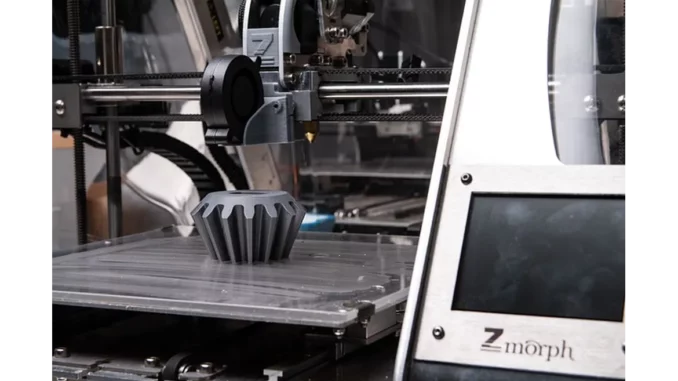
Nestled in the heart of North East England, Northumbria University is tackling the dual challenges of a housing crisis and climate change with an innovative approach. The institution’s latest endeavour involves the integration of cutting-edge construction technology, particularly 3D printing, to revolutionise the industry. During a recent discussion over coffee with Emily Thompson, a keen observer of these developments, it became evident that Northumbria’s initiative is not merely an academic pursuit but a pivotal turning point in the realm of sustainable construction.
Successful low-energy building design hinges on careful planning. Focus360 Energy can help.
As we sat in a cosy café near the university, Emily’s enthusiasm for the project was palpable. She detailed her experience of witnessing the university’s state-of-the-art 3D printing technology in action. “Entering Northumbria’s Structures Laboratory is like stepping into the future,” she said, her eyes bright with excitement. “It’s about much more than the technology itself; it’s about reimagining how we address both housing shortages and environmental impact.”
In collaboration with Luyten 3D and ChangeMaker 3D, Northumbria University has installed a sophisticated construction 3D printer on its campus, a project funded by a Royal Society Research grant. This installation is part of a larger mission to address the regional housing shortage in a sustainable manner by testing and validating concrete elements for broader industry use. Emily pointed out the urgency of the housing crisis in North East England, noting that traditional construction methods are insufficient to meet the growing demand. “The waiting lists for social housing are soaring, and rental demand is outstripping supply,” she remarked. “That’s where 3D printing technology becomes crucial.”
This technology promises faster, cheaper, and more sustainable construction processes. However, as Emily astutely noted, the environmental footprint of concrete production remains a significant challenge, as it is a major contributor to global carbon emissions. The university is addressing this by focusing on developing eco-friendly concrete mixes and optimising designs to reduce material usage. “Dr. Mohammadali Rezazadeh, the Principal Investigator, is pioneering sustainable infrastructure,” Emily explained. “By using corrosion-resistant composite materials, they’re paving the way for construction practices that are both efficient and environmentally sustainable.”
One of the most intriguing aspects of 3D printing, as highlighted by Emily, is its architectural potential. The flexibility of the printer’s nozzle allows for the creation of fluid and organic structures, which are not only aesthetically pleasing but also energy-efficient. This represents a departure from the rigid, angular designs of conventional buildings. “Picture homes with curved walls that naturally regulate temperature and reduce energy consumption,” Emily said, her voice filled with anticipation. “It’s a paradigm shift for sustainable living.”
Northumbria’s collaboration with ChangeMaker 3D extends beyond technology integration; it also plays a crucial role in skill development among students. Emily emphasised the importance of this hands-on approach, which prepares students for the future of construction. “Students are not just learning about 3D printing; they’re engaging with it practically, understanding its real-world applications,” she noted. “It’s about equipping a new generation of designers and engineers to tackle global challenges.”
Throughout our conversation, Emily underscored the value of local partnerships in maximising the technology’s potential. Northumbria is already working with organisations in health, water, and civil engineering to pilot various sustainable infrastructure projects, including hospital buildings and water tanks. “The beauty of this initiative is its adaptability,” Emily said. “Whether it’s a small-scale pilot or a full-scale project, the technology is versatile enough to meet diverse needs while maintaining a focus on sustainability.”
As our discussion drew to a close, Emily reflected on the broader significance of Northumbria’s work. “It’s about more than just solving a housing crisis,” she concluded. “It’s about setting a precedent for building a sustainable future, one innovative step at a time.”
In an era where the urgency of climate change and housing shortages intersect, Northumbria University’s pioneering efforts in construction 3D printing offer a promising path forward. As Emily aptly observed, this initiative extends beyond academia; it is a testament to the transformative power of innovation in crafting a better tomorrow.


Be the first to comment